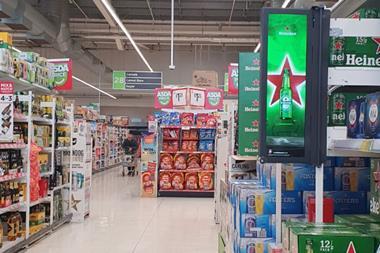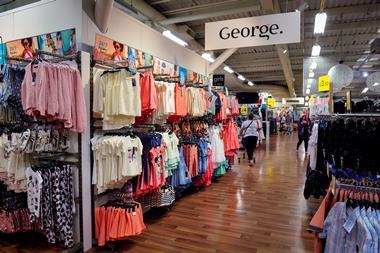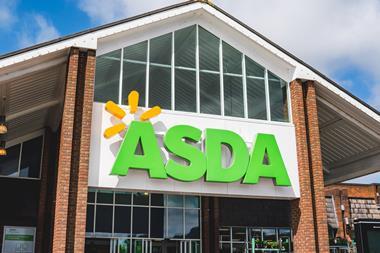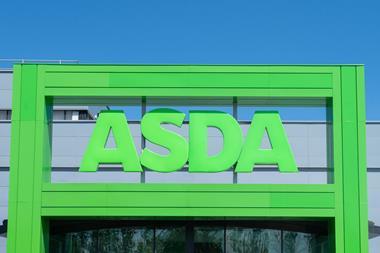Asda’s 265th store was completed in Stevenage in December. The store represents an investment of £45m and forms part of the new Stevenage Centre, one of the biggest capital build projects for post-16 further education in the UK. Asda provided £20m funding for this scheme, in partnership with North Hertfordshire College.
The 74,000 sq ft store fills a geographical gap in the Asda estate but does not appear to offer huge potential for Britain’s number two grocery group.
The catchment map reveals that the new store’s catchment fills a hole in Asda’s coverage, not impingeing on the catchments of its nearest stores at Luton or Hatfield, more than seven miles away. The A1(M) creates a strong barrier to the catchment to the west of Stevenage, and the strong competition to the south in Welwyn Garden City constrains the catchment further.
In pure turnover terms, the store can be expected to perform in the middle of the Asda/Wal-Mart estate.
However, in terms of sales density, CACI predicts that the store is likely to perform in the bottom 20% of group stores.
This relatively poor performance is reflected by the fact that, after the opening, Asda will still remain some way behind Sainsbury and Tesco.
These two retailers have a very strong presence in the area. Both Sainsbury and Tesco have two stores in Stevenage itself and they also have stores just north and south along the A1(M) in Letchworth and Welwyn Garden City
Asda will have an impact on five Tesco stores, reflecting the remarkable level of coverage that Tesco has in this part of its heartland.
The new Asda store is likely to result in a weekly loss of £432,000 from Tesco’s five stores.
Sainsbury suffers an impact in three stores. CACI predicts this will result in a weekly loss of £216,000.
Marks and Spencer, which has two stores in the catchment area, will see a lesser impact, estimated at about £45,000 a week.
Asda is unlikely to be rescued by demographics. CACI’s analysis reveals that the customers of the Stevenage catchment have a very similar overall fit to each of the big three retailers, as shown in the graph below.
Asda serves the dominant local demographic group Blue Collar Root better than any of its main local rivals. However, it under-performs among the other major group in this mixed catchment, the Wealthy Executives.
This could be a major issue for Asda as many of this affluent group are located on the outer edges of the catchment and are relatively unlikely to travel the distance to Asda if it does not meet their requirements.
The 74,000 sq ft store fills a geographical gap in the Asda estate but does not appear to offer huge potential for Britain’s number two grocery group.
The catchment map reveals that the new store’s catchment fills a hole in Asda’s coverage, not impingeing on the catchments of its nearest stores at Luton or Hatfield, more than seven miles away. The A1(M) creates a strong barrier to the catchment to the west of Stevenage, and the strong competition to the south in Welwyn Garden City constrains the catchment further.
In pure turnover terms, the store can be expected to perform in the middle of the Asda/Wal-Mart estate.
However, in terms of sales density, CACI predicts that the store is likely to perform in the bottom 20% of group stores.
This relatively poor performance is reflected by the fact that, after the opening, Asda will still remain some way behind Sainsbury and Tesco.
These two retailers have a very strong presence in the area. Both Sainsbury and Tesco have two stores in Stevenage itself and they also have stores just north and south along the A1(M) in Letchworth and Welwyn Garden City
Asda will have an impact on five Tesco stores, reflecting the remarkable level of coverage that Tesco has in this part of its heartland.
The new Asda store is likely to result in a weekly loss of £432,000 from Tesco’s five stores.
Sainsbury suffers an impact in three stores. CACI predicts this will result in a weekly loss of £216,000.
Marks and Spencer, which has two stores in the catchment area, will see a lesser impact, estimated at about £45,000 a week.
Asda is unlikely to be rescued by demographics. CACI’s analysis reveals that the customers of the Stevenage catchment have a very similar overall fit to each of the big three retailers, as shown in the graph below.
Asda serves the dominant local demographic group Blue Collar Root better than any of its main local rivals. However, it under-performs among the other major group in this mixed catchment, the Wealthy Executives.
This could be a major issue for Asda as many of this affluent group are located on the outer edges of the catchment and are relatively unlikely to travel the distance to Asda if it does not meet their requirements.













No comments yet